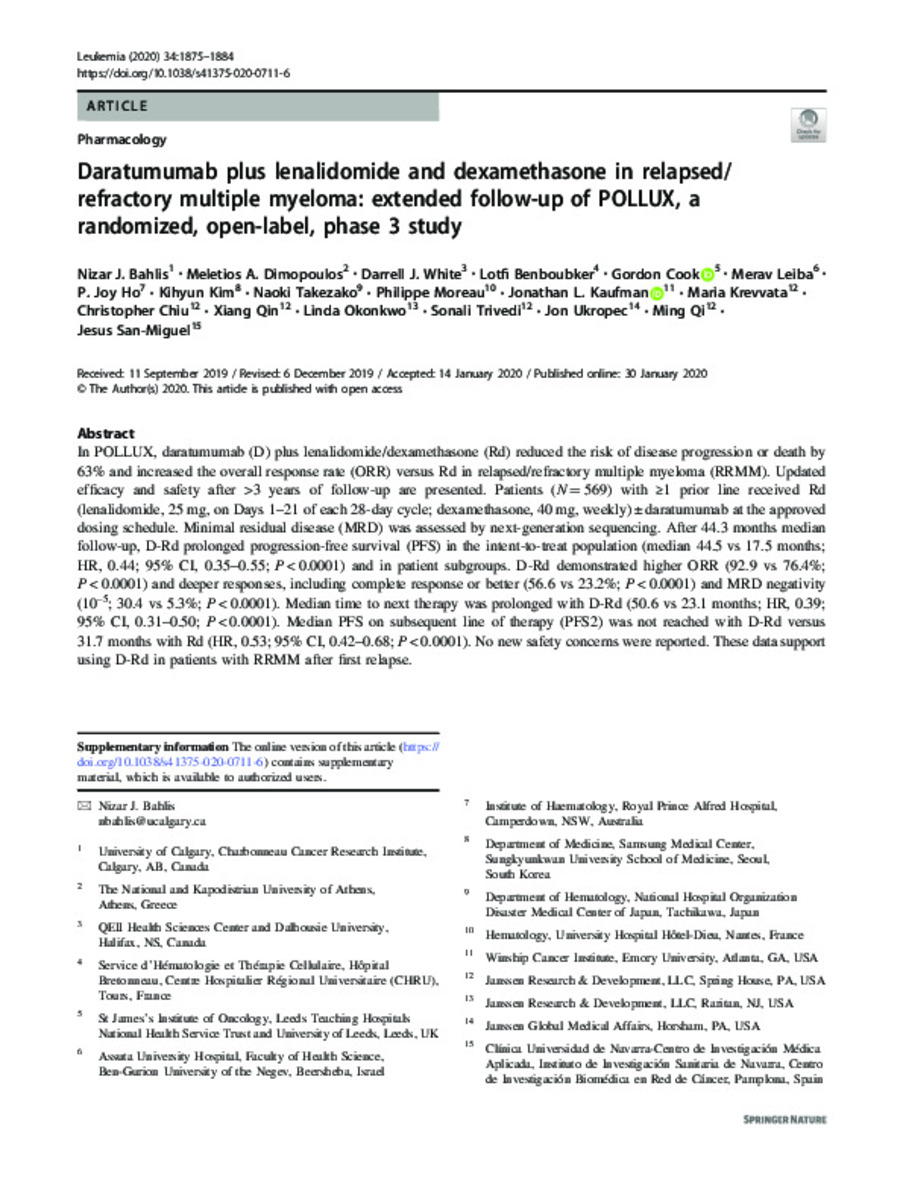Daratumumab plus lenalidomide and dexamethasone in relapsed/ refractory multiple myeloma: extended follow-up of POLLUX, a randomized, open-label, phase 3 study
Fecha de publicación :
2020
Nota:
This article is licensed under a Creative Commons
Attribution 4.0 International License, which permits use, sharing,
adaptation, distribution and reproduction in any medium or format, as
long as you give appropriate credit to the original author(s) and the
source, provide a link to the Creative Commons license, and indicate if
changes were made. The images or other third party material in this
article are included in the article’s Creative Commons license, unless
indicated otherwise in a credit line to the material. If material is not
included in the article’s Creative Commons license and your intended
use is not permitted by statutory regulation or exceeds the permitted
use, you will need to obtain permission directly from the copyright
holder. To view a copy of this license, visit http://creativecommons.
org/licenses/by/4.0/.
Cita:
Bahlis, N.J. (Nizar J.); Dimopoulos, M.A. (Meletios A.); White, D.J. (Darrell J.); et al. "Daratumumab plus lenalidomide and dexamethasone in relapsed/ refractory multiple myeloma: extended follow-up of POLLUX, a randomized, open-label, phase 3 study". Leukemia. 34, 2020, 1875 - 1884
Aparece en las colecciones:
Estadísticas e impacto
0 citas en

Los ítems de Dadun están protegidos por copyright, con todos los derechos reservados, a menos que se indique lo contrario.










